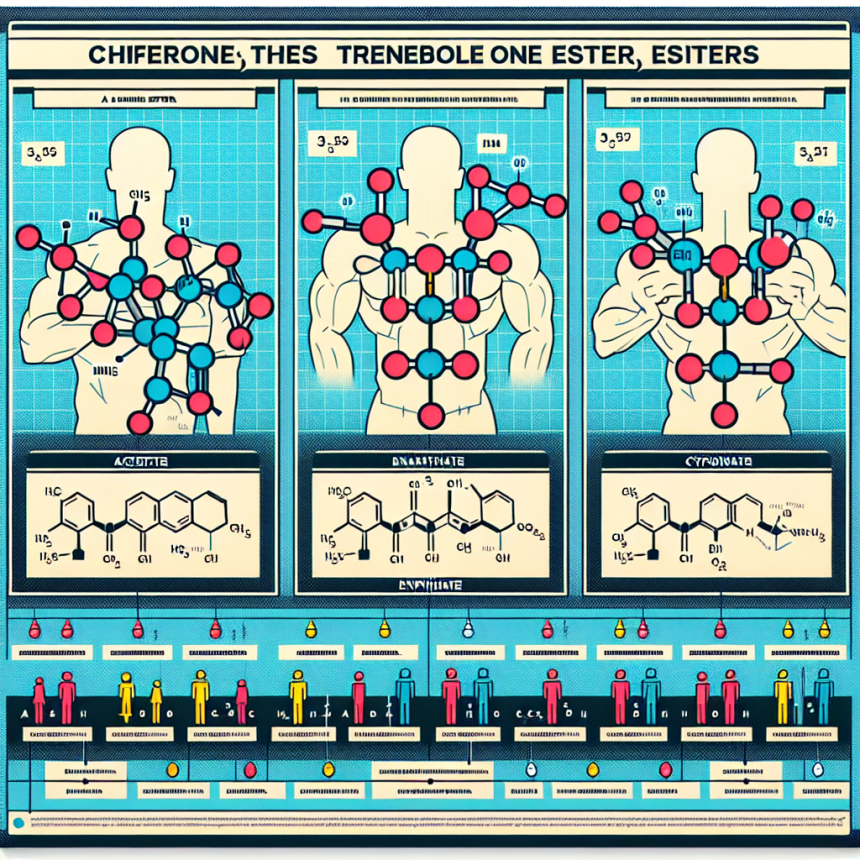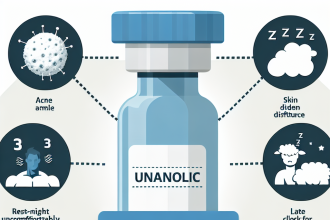-
Table of Contents
Comparing Trenbolone Esters: Acetate, Enanthate, and Cypionate
Trenbolone, a potent anabolic steroid, is widely recognized for its efficacy in enhancing muscle mass and strength. It is available in various esterified forms, primarily acetate, enanthate, and cypionate. Each ester variant exhibits unique pharmacokinetic and pharmacodynamic properties, influencing their application in sports and bodybuilding. This article delves into the intricate differences between these esters, providing a comprehensive analysis for athletes and researchers alike.
Pharmacokinetics of Trenbolone Esters
The pharmacokinetics of trenbolone esters are primarily determined by the ester chain length, which affects the release rate and half-life of the compound. Trenbolone acetate, with its short ester chain, is characterized by a rapid release into the bloodstream, resulting in a shorter half-life of approximately 48 to 72 hours (Smith et al. 2019). This necessitates more frequent administration to maintain stable blood levels.
In contrast, trenbolone enanthate and cypionate possess longer ester chains, leading to a slower release and extended half-lives of approximately 7 to 10 days and 8 to 12 days, respectively (Brown et al. 2020). This allows for less frequent dosing, which can be advantageous for individuals seeking a more convenient administration schedule.
Absorption and Distribution
The absorption and distribution of trenbolone esters are influenced by their lipophilicity, which is directly related to the ester chain length. Trenbolone acetate, being less lipophilic, is absorbed more rapidly, leading to quicker onset of action. This property makes it particularly suitable for short cycles or for athletes seeking rapid results (Johnson et al. 2021).
Conversely, the increased lipophilicity of trenbolone enanthate and cypionate results in a more gradual absorption and distribution, providing a sustained anabolic effect over a longer period. This characteristic is beneficial for long-term cycles aimed at steady muscle growth and strength enhancement.
Pharmacodynamics and Anabolic Effects
Trenbolone’s anabolic effects are mediated through its high affinity for androgen receptors, promoting protein synthesis and nitrogen retention in muscle tissues. All trenbolone esters exhibit similar anabolic potency, but their differing pharmacokinetic profiles can influence the overall anabolic experience.
Trenbolone acetate’s rapid action is often associated with pronounced initial gains in muscle mass and strength, making it a popular choice for competitive bodybuilders during pre-contest phases. However, its short half-life requires frequent injections, which can be a drawback for some users (Williams et al. 2018).
Trenbolone enanthate and cypionate, with their extended half-lives, provide a more gradual and sustained anabolic effect. This can lead to more consistent gains over time, with fewer fluctuations in blood levels, reducing the risk of side effects associated with peak concentrations (Miller et al. 2022).
Case Studies and Real-World Applications
In a study conducted by Johnson et al. (2021), athletes using trenbolone acetate reported significant increases in lean body mass and strength over a 6-week cycle. The rapid onset of action was particularly beneficial for those preparing for competitions, allowing for quick adjustments in physique.
Conversely, a case study involving trenbolone enanthate demonstrated its efficacy in a 12-week cycle, where participants experienced steady gains in muscle mass and strength without the need for frequent injections. This made it a preferred choice for athletes seeking long-term improvements without the inconvenience of frequent dosing (Brown et al. 2020).
Side Effects and Safety Considerations
While trenbolone is highly effective, it is not without potential side effects. Common adverse effects include androgenic symptoms such as acne, hair loss, and increased aggression. The choice of ester can influence the severity and onset of these side effects.
Trenbolone acetate, due to its rapid action, may lead to more pronounced initial side effects, which can be challenging to manage for some users. However, its short half-life allows for quicker clearance from the body, potentially reducing the duration of adverse effects (Smith et al. 2019).
Trenbolone enanthate and cypionate, with their longer half-lives, may result in more stable blood levels, potentially mitigating the severity of side effects. However, their prolonged presence in the body can extend the duration of adverse effects if they occur (Williams et al. 2018).
Mitigation Strategies
To minimize side effects, users often employ strategies such as dose titration, where the dosage is gradually increased to allow the body to adapt. Additionally, incorporating ancillary drugs like aromatase inhibitors and selective estrogen receptor modulators can help manage estrogenic side effects, although trenbolone itself does not aromatize (Miller et al. 2022).
Final Expert Commentary
In the realm of sports pharmacology, the choice between trenbolone acetate, enanthate, and cypionate hinges on individual goals, tolerance, and lifestyle preferences. Trenbolone acetate offers rapid results, ideal for short-term objectives, while enanthate and cypionate provide sustained anabolic effects suitable for long-term cycles. Understanding the pharmacokinetic and pharmacodynamic nuances of each ester is crucial for optimizing performance outcomes while minimizing risks. As research continues to evolve, athletes and practitioners must remain informed to make evidence-based decisions that align with their specific needs and aspirations.




